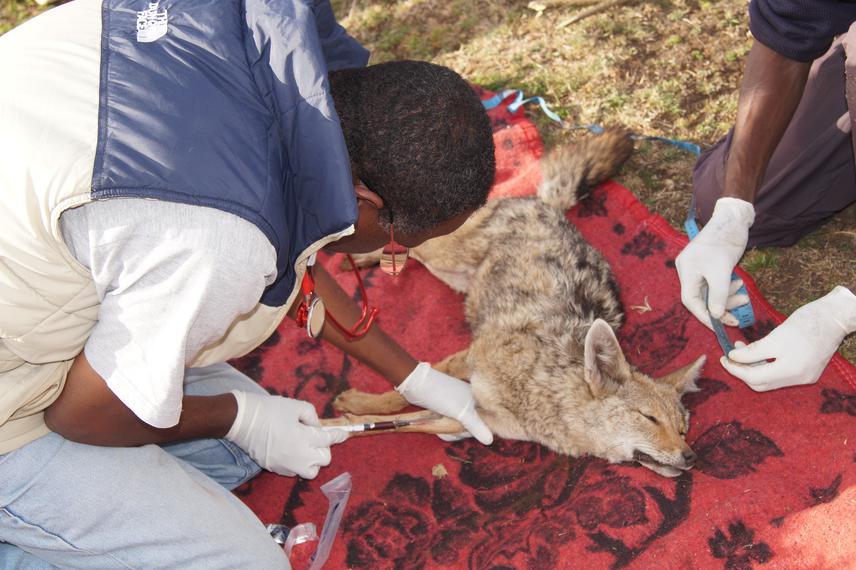Tariku Mekonnen Gutema
Other projects
4 Nov 2014
Foraging Ecology and Resource Competition between Sympatric African Wolf (Canis lupus lupaster) and Ethiopian Wolf (Canis simensis) in the Ethiopian Highlands
12 Jun 2018
African Wolf Density in the Ethiopian Highlands and its Implication for Ethiopian Wolf Conservation
23 Jan 2020
Promoting the Co-Existence Approach of Carnivore Conservation in Human Dominated Landscape of Ethiopian Highlands, Guassa
The study aims to increase the knowledge about the behavioral ecology of the recently discovered African wolf and its potential impact on Endangered Ethiopian wolf.

African wolves were first reported from Ethiopia in 2011 and soon thereafter in North and West African countries in 2012 (Rueness et al., 2011; Gaubert et al., 2012). The first study revealed that the golden jackals (Canis aureus) in Ethiopia and Egyptian golden jackals (Canis aureus lupaster) both actually belonged to the same taxon and that this taxon should be regarded as a wolf not a jackal.
These newly named African wolves are associated with members of the grey wolf species complex, together with the Holarctic wolf, the Indian wolf and the Himalayan wolf (Rueness et al., 2011). The study was carried out based on maternal mitochondrial DNA and was the subject of some initial debate. However, in 2015, scientists revealed the African wolf’s full genome sequence (Koepfli et al., 2015) and Genome by RAD Sequence (Rueness et al., 2015), results which supported the initial study by Rueness et al. (2011) and proved the African wolf is in fact a distinctive species. However, it is not yet clear whether all ‘golden jackals’ in Africa belong to the same African wolf or there are both African wolves and golden jackals which cannot be discriminated from one another based on their morphological appearance on the continent. Very little is known about its ecology, population density and conservation threats. In April 2015, I initiated research on the behavioral ecology of the African wolf in the Guassa highlands of Ethiopia (10◦ 15_–10◦ 27_N and 39◦ 45_–39◦ 49) where I put VHF collars on 7 individuals (two males and five females). All collared individuals were confirmed to be African wolves based on DNA sequencing.
This study is to carry out a similar study of African wolf behavior ecology and potential effect on sympatric Ethiopian wolf in the Borena-Saynt National Park, South Wollo, Ethiopia. This will make our results not site specific and increase our sampled individual African wolves to 14 which will make our results more conclusive.